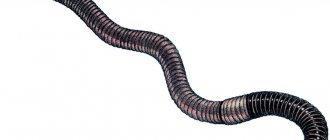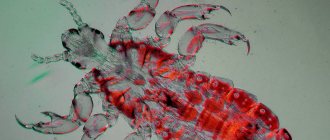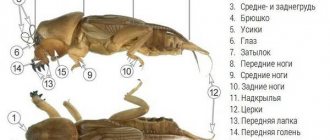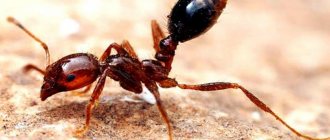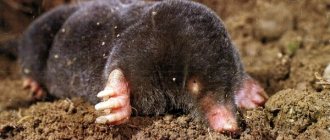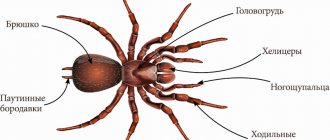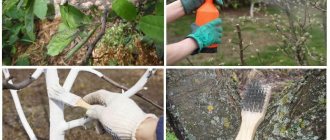- What kind of life does the beetle lead?
- A giant among the Khrushchaks
- Red flour beetle
- Horned beetle
- How to get rid of flour beetles
- Folk remedies for Khrushchak
- Chemicals
- Prevention
Brown or black bugs are lovers of grains, cereals, flour, bran and other similar products. Having appeared even in a cleanly cleaned apartment, the beetle hides in bulk food products, where larval worms then appear and eat up the supplies. It is not easy to detect pests, but it is not difficult to get rid of them in time. In order to drive out unwanted guests, it is worth getting acquainted with the appearance of the beetles, habits and methods of dealing with these beetles.
What kind of life does the beetle lead?
The beetle gets into the apartment with contaminated food at any time or at the end of summer, when adult insects are attracted by glowing light bulbs. In addition, pigeons carry eggs and larvae. Having penetrated the apartment, beetles settle in cereals and flour products.
Khrushchaki pests hide in the pantry and even in the underground if there are supplies there: the larvae feed on undried dried fruits, chocolate, nuts, cardboard and glue, natural silk and wool. Products after them are unsuitable for food, and even cause severe toxic damage to the body.
Khrushchev pests often choose places where there is no ventilation; they love humidity and mustiness. In private homes they hide among stockpiles of animal food.
An oblong beetle with strong jaws and a body length of 3.5-4 mm. The body is brown, red-brown or black. These beetles, once in an apartment or house, immediately breed offspring, which appear within a week.
And after 3 months the next generation comes out. While the females live, they lay 600-700 eggs, which are attached to the product with special mucus. The larvae, which are also called mealworms, grow up to 7 mm, are brown-yellow in color, and after molting, they become whitish or colorless.
Khrushchev with larvae can withstand frost of 5-6 degrees, and temperatures below 7 are destructive for them.
Interesting: in some Asian countries, larvae, a source of protein, are bred and eaten fried and boiled instead of meat. There are also lovers of such food in Russia.
Life cycle and habitat
Khrushchak beetles are part of the group of Coleoptera insects. Maximum activity is replaced at the larval stage - the mealworm. In Asia, such pests are eaten and specially bred for consumption. Life expectancy from the moment of hatching will be up to a year.
Interesting! Frequently consumed in the West, beetleworm larvae are grown in the Netherlands for human and animal consumption.
Characteristic features of the insect:
- Resistance to cold with the ability to withstand up to 7°C frost.
- The source of infection in human housing is pigeons, which are in symbiosis with insects.
- Powerful jaws of beetles, capable of chewing through solid matter.
Flour eaters prefer to live in factories, factories and grain storage facilities, warehouses. From elevators, their eggs can end up on retail shelves, where anyone can buy cereal and bring it home to their apartment. In some cases, they fly from the street into the light in the house.
In private housing, they prefer pantries, kitchen cabinets, bread bins and jars of cereals, but they can live under the baseboard. Reproduction is very fast, so food has to be thrown away after being infested with beetles.
A giant among the Khrushchaks
The length of the black or brown body of the large mealworm is 1.2-1.8 cm. The beetle can fly. Where the insect visits, the food smells sharp and unpleasant. Lifespan – 18 months.
Light yellow larval worms without eyes emerge from the eggs laid by the female in the food. With the help of their tenacious legs, they crawl, climb and make their way inside food. Before pupation, the larvae are already 3 cm long.
Types of pests
The following types of household pests are known today:
Bread grinder
It is found in bakeries, where they forget about basic hygiene and disinfection methods and, perfectly adapting to almost any environment, ends up with the products in homes. The size of the insect is 3 millimeters in length, it flies perfectly, which allows it to quickly move from place to place and, because of this, it is more difficult to eliminate. Usually he eats bread, but he can also enjoy rice, buckwheat, tea, animal food and even an old book.
Mucoed
Prefers flour, cereals and grains. It is very voracious, despite its tiny size - 2 millimeters in length. The flour beetle larva is even smaller, so it is difficult to notice it right away: black dots found in flour are a sign of the presence of mucoed larvae in it. The beetle is very prolific, producing offspring up to 7 times a year in large quantities. Therefore, in just a couple of months, flour can turn into a breeding ground for these insects. The ideal environment for mucoed is high humidity and warmth.
Flour beetle
This is a small insect up to 4 millimeters long, reddish-brown in color. It multiplies rapidly, and settles not only in flour and cereals, but also in furniture and dishes. Breeding a beetle is very difficult, as it is unpretentious to living conditions and is hardy.
food moth
She looks like a simple moth. The length of its body does not exceed 1 centimeter. It is characterized by high fertility (over five hundred eggs in two weeks, from which caterpillars hatch). The moth devours cereal reserves at high speed. Her ability to hide, fly and disguise herself as dark objects makes her virtually invulnerable.
Weevils
They can appear in literally all products: cereals, flour, bread, dried fruits, fruits and vegetables. They look like small bugs, about 5 millimeters in size with a long proboscis. Weevils can fly, changing their location depending on changes in environmental conditions, and also easily climb walls. The pest produces offspring up to 6 times a year. They settle everywhere: remote corners of the kitchen cabinet, containers of cereals, bed linen, baseboards, cracks.
Red flour beetle
The red-red pest is called the small mealworm, with a flat body length of 3-4 mm. This is an ancient inhabitant of the planet - beetles were found in Egyptian pyramids among the utensils of deceased pharaohs.
Flour beetles do not fly, they only run, unable to climb onto a vertical, smooth surface. Scaring off the enemy with an odorous liquid, it shows by smell where it lives. Insects are heat-loving - when the temperature drops to 0 degrees, they die after 3 days.
During the year, females lay 40-50 white eggs 5-6 times. Flour and dirt stick to sticky eggs, making them invisible. After 7 days, white 3-7 mm worm larvae emerge. With the help of triangular hook-shaped processes they climb like mountain climbers.
After 20-100 days, the already yellow larvae become yellow-white pupae. And a month later a sexually mature beetle appears. Insects live for less than six months.
How to spot beetles?
Before getting rid of the beetle, you need to find a den. Regardless of the subspecies, flour beetles and larvae can be seen in flour; it is much worse to determine their presence in buckwheat or other dark cereals. In addition, you can determine the presence of flour if it becomes uneven and lumps appear.
More often, insects burrow deeper into food, so they can be discovered during cooking. You also need to pay attention to the smell from a can of cereal or a bag. If there is an uncharacteristic aroma, we can talk about damage by beetles.
Insects can also live right in cabinets or drawers, so during elimination you need to carefully check everything, inspect the space behind door jambs and baseboards.
How to get rid of flour beetles
The first thing to do if these beetles appear in your apartment is to throw away bulk products. If it’s a pity to throw away the cereal and flour, calcining it in the oven or freezing it at 10 degrees below zero will help kill the larvae and beetles.
It is worth remembering that the eggs are sown in other places, so the second thing is to do some general cleaning:
- wash with water and vinegar, then provide ventilation by opening the windows;
- spray or wipe the baseboards and adjacent floor with a chemical;
- Rinse open containers in vinegar solution, use hot steam or boiling;
- Place the products in a tightly sealed glass container.
Household grinder beetles
These insects are capable of quickly destroying buildings for various purposes, constructed from solid logs, boards and other lumber. They also attack furniture and can cause damage to the garden by infesting fruit trees and various plants, garden furniture and equipment.
Weevil beetle
Weevils are unique in that they are essentially universal in terms of where they live. They feel comfortable both on non-living tree trunks and on the shoots of young trees. They are often found in firewood if they are stored in an open woodpile.
The body of these insects has a slightly elongated head, on which there is a long or short proboscis. The length of adult individuals varies over a wide range - from 1 to 30 mm. They are also varied in shape - the body can be diamond-shaped, spherical, oblong or cylindrical, hemispherical.
There is no single color - species of grinder beetles of this group are found in yellow, brown or black, but often there are noticeable spots on the upper part. The pronotum and elytra are covered with bristly hairs, scales, or may also be without them. The paws are yellow or brown-red.
Important! The larvae of this species are recognizable: they are legless, yellow, white or red-brown in color with a characteristic C-shape. To accurately determine the type of pest detected, you can compare its appearance with a photo.
Furniture sharpener
These grinder beetles quickly and completely destroy walls made of logs, various interior items, both solid wood and sawn-based materials such as plywood, chipboard, and fiberboard. Pests can be found even in dry plaster or cardboard.
Important! The development of one generation occurs over 2-3 years, sometimes 4 years.
The length of an adult beetle averages 4-5 mm. The elytra are wider than the pronotum, the sides of which are smooth and rounded, and the posterior angles are clearly defined and pointed. There are pinpoint flat grooves between the elytra. On the surface of the insect there is also dust-like pubescence, although very weakly expressed. The wings are elongated and narrow. There are antennae that are longer in males.
After hatching, the larvae bite into the wood and develop further in its deeper layers, boring longitudinal passages along the fibers. They also clog these tubules with waste from their vital activity, mixed with wood husks. Because of this, furniture affected by grinders has a specific unpleasant odor. Often walls or pieces of furniture may look intact and strong, but in fact be completely rotten inside, and therefore unsafe for humans.
Important! The larvae die at a temperature of about -16 degrees if the object is kept in such conditions for 2 days. But if the temperature is about +30 degrees, then the larvae hatch, but are not able to bite into the material, and the females fall into torpor under these conditions.
Measures to combat household grinders
To combat household beetles, special chemicals are most suitable. They are presented on the market in different types:
- Products based on phosphine (hydrogen phosphide, as well as aluminum and magnesium phosphide). Processing occurs using film or chamber methods. This option is more suitable for the treatment of contaminated industrial sites by specialists, since all drugs are very toxic to humans.
- Contact insecticides. They differ in the principle of influence and component composition. Also according to their intended purpose - there are means that destroy adult individuals, and there are those that lead to the death of larvae and even eggs.
- Oils and pastes with insecticides. A more gentle option, as less toxic insecticides are used. This and the previous method are suitable for household use.
Regarding prevention, any wood materials must be protected:
- When harvesting, manufacturers often treat them with antiseptics. If this is a house made of rounded logs, then it is definitely necessary to apply such a solution immediately before construction, and then periodically during operation.
- If this is furniture made of wood-based materials or solid logs, plank floors, then they can be protected with various means of paint and varnish products. Their choice today is very extensive. In addition, this method will give a more aesthetic appearance to surfaces and objects.
- It is necessary to regularly inspect all interior items, walls, floors and outbuildings, made of wood materials.
- A woodpile with firewood should not be placed too close to a residential building to avoid contamination.
- If you are constructing or assembling furniture yourself, then before you purchase materials and bring them home, you must carefully inspect them for infestation with borer beetles on the seller’s premises.
Folk remedies for Khrushchak
As a pest repellent, use laurel leaves, lavender or Caucasian chamomile in the form of dried herbs, soaked swabs in a decoction, or choosing an aromatic essential oil.
If there are a lot of supplies, then steel hoops are put on the bags, metal lids and nails are placed on the dishes - the Khrushchaks do not like this metal. Beetles also cannot stand the smell of garlic and citrus, so garlic and lemon or orange peels are placed in jars of food.
Every month it is useful to treat cabinets and other food storage areas with a disinfectant solution: add 1 tbsp of soda and vinegar to 1 liter of warm water. l.
I use boric acid (borax) as bait - when eaten by a beetle, it poisons its body inside. Mix borax with powdered sugar or flour, semolina, honey or other products that attract the pest. Sprinkle on leaves and place on shelves in kitchen cabinets.
Effective methods for controlling beetles in cereals
Naturally, the use of chemicals in the kitchen is absolutely undesirable, although this is the first thing that comes to mind. Treating surfaces with toxic drugs requires certain rules, otherwise unpredictable consequences are possible. Therefore, you should not go straight to the store to purchase chemical control agents, since there are other, safer ways to get rid of such pests. For example:
- After identifying pests in bulk food products, the latter can be placed in the freezer for a while, after which the pests will die. All that remains is to dry the cereal and sift thoroughly.
- Cereals can be processed at temperatures of 110 degrees or more. Before this, the cereals are washed, which allows the waste products of parasites to be removed from them as much as possible.
- Rinsing grains with salt water gives good results. As a result, all pests float to the surface of the water, after which they are removed. After this, the cereal can be washed with plain water and dried well.
- The flour can only be sifted, but after this insect eggs may remain. In such cases, it is better to use a sieve with very fine holes.
- As life shows, rather than waste time fighting such pests, it is better to immediately throw away the affected products.
You can destroy parasites in cabinets and storage containers using the following means:
- First of all, you need to empty the cabinets of their contents, after which everything inside is thoroughly cleaned. Particular attention should be paid to leftover food.
- To treat surfaces, you can use table vinegar, which has a detrimental effect on adults and larvae. A solution of table vinegar disinfects any surfaces in the kitchen, and also repels various insects.
- Using boiling water also helps get rid of pests. To do this, just pour boiling water over all containers.
- It is advisable to wash fabric bags in salt water, but it is better to store bulk products in glass containers.
- To catch adult individuals, you can use a trap: place a mixture of borax and sugar in a 1:1 ratio on pieces of paper. It is advisable to change traps every day.
Some plants show good results in pest control, the smell of which repels many insects. These are lavender, citrus fruits, lemon balm, mint and others. If you soak strips of fabric in the infusions of these plants and place them throughout the kitchen, in places where pests are expected to appear, this will help protect food from the invasion of many insects.
It is equally important to clean the room so that there are no leftover food left on the table or in the cabinets, which attracts many who like to make money at someone else’s expense.
How to get rid of bugs in cereals and in the cupboard! THEY WILL NOT APPEAR AGAIN!
Chemicals
Among the chemicals used in apartments, pyrethroid chemicals are most often used:
- pirimophos,
- bifenthrin and other drugs.
These are tablets, solutions, gels and aerosols that are bought in the hardware department of stores.
When there are a lot of Khrushchak insects, there is no desire to fight them or it takes little time to destroy them, they invite specialist exterminators. Professionals spray the chemical using modern special equipment. Fine dust is created that penetrates everywhere.
Harm to humans
What is the danger of the torment beetle?
Parasites feed on almost everything; they feast on flour, bran, semolina porridge, even some semi-finished products. In the absence of other food, beetles actively eat chocolate, nuts, dried fruits, glue, cardboard, and knitwear. Contaminated products are completely unfit for human consumption. The larvae can be removed mechanically, but beetle eggs are difficult to notice; sifting through a sieve will not help due to their small size. The eggs are covered with mucus, which helps food stick to it. Pests infect the hosts' food supplies with products of their vital activity, skins, and food acquire an unpleasant aroma that is difficult to get rid of.
There are reliable facts that the beetle larvae have gnawed through burlap, even tarpaulin. Therefore, parasites can infect bedding and other items made from natural fabrics. Even domestic animals suffer from beetles, and people become disgusted. Beetles multiply quickly, you need to start fighting them as early as possible, otherwise you will have to destroy a whole horde of parasites.
Important! Eating contaminated food is prohibited; neglecting this rule promises the development of an allergic reaction, serious food poisoning, even intoxication of the body.
